Penstemon eatonii, Firecracker Penstemon
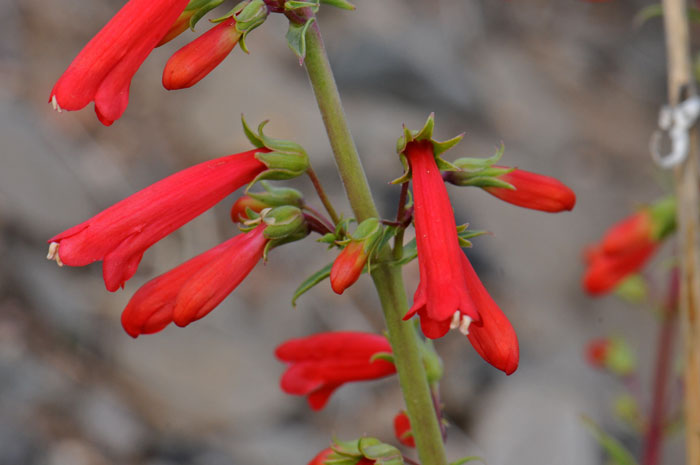
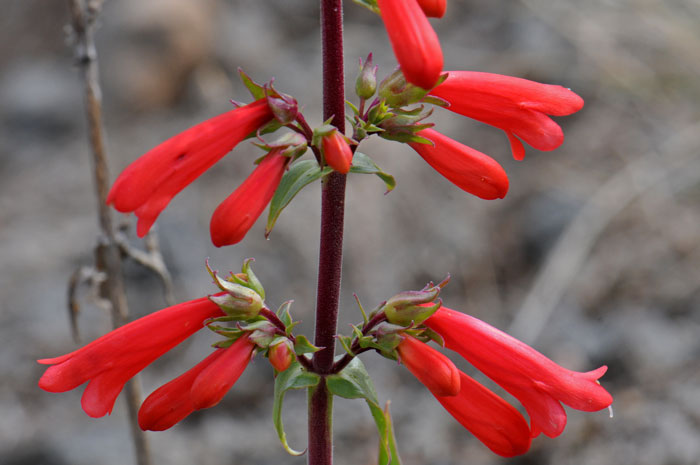
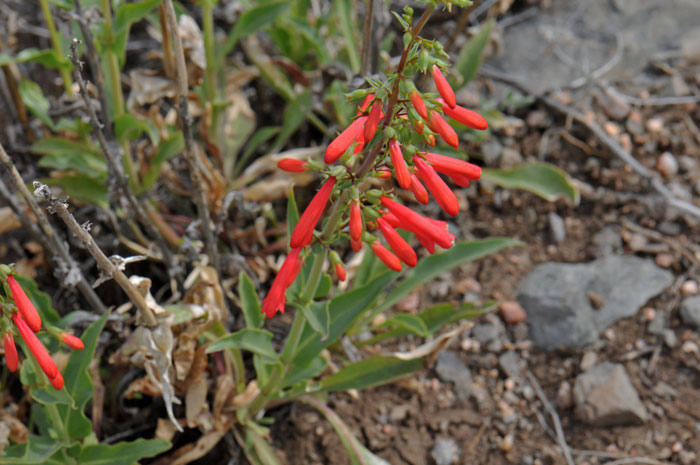
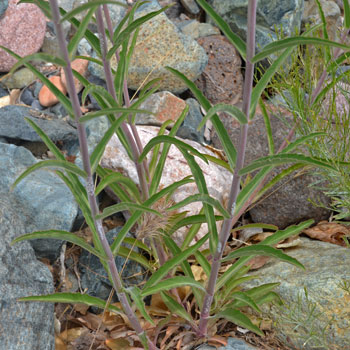
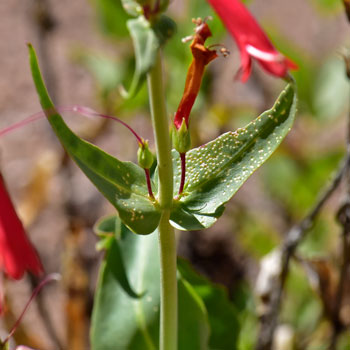
Scientific Name: Penstemon eatonii
Common Name: Firecracker Penstemon
Also Called: Eaton Penstemon, Eaton's Penstemon
Family: Scrophulariaceae, Figwort or Snapdragon Family - Moving to Plantaginaceae
Synonyms: ()
Status: Native
Duration: Perennial
Size: Up to 2½ feet or more.
Growth Form: Forb/herb; stems coarse, purplish.
Leaves: Green, deep green; tough, leaves in pairs, narrowly lanceolate to ovate, sessile, clasping stems, margins entire, upper stem leaves greatly reduced.
Flower Color: Red, scarlet; flowers showy, tubular or salverform, glabrous, flowers on short green or reddish pedicels; upper flowers from leaf axils; calyx short and green.
Flowering Season: February to June; May to August in Texas.
Elevation: 2,000 to 7,000 feet; 4,500 t0 9,000 feet in California.
Habitat Preferences: Lower and upper deserts, mesas, fields, roadsides; sandy or clay soils; also in pinyon/juniper and pine forest communities.
Recorded Range: Penstemon eatonii is found throughout the southwestern United States in; AZ, CA, CO, NM, NV, UT. It is marginally present in northern Mexico. In Arizona it occurs throughout most of the state with few records in La Paz, Cochise, Graham, Greenlee, Santa Cruz and Yuma counties.
North America & US County Distribution Map for Penstemon eatonii.
U.S. Weed Information: No information available.
Invasive/Noxious Weed Information: No information available.
Wetland Indicator: No information available.
Threatened/Endangered Information: No information available.
In the Southwestern United States, Arizona there are 43 species of Penstemon, in California there are 55 species, Nevada has 50 species, New Mexico has 47 species, Texas has 24 species, Utah has 73 species. All data is approximate and subject to taxonomic changes.
There are 3 subsp. in Penstemon eatonii;
Penstemon eatonii subsp. eatonii, Firecracker Penstemon, (AZ, CA, CO, ID, NM, NV, UT, WY);
Penstemon eatonii subsp. exsertus, Firecracker Penstemon, (AZ, Maricopa, Gila, Pinal counties);
Penstemon eatonii subsp. undosus, Firecracker Penstemon, (AZ, CA, CO, NM, NV, UT).
Comments: Penstemon eatonii is one of our larger, more robust, drought tolerant Penstemons in the southwest. As with many other tubular Penstemons, particularly red, this species readily attracts hummingbirds.
Penstemon eatonii has been used for food and traded by North American indigenous peoples.
Hopi Other, Ceremonial Items, Plant, associated with east direction, used in the Po-wa-mu ceremony.
Hopi Other, Season Indicator, Flowers used to indicate when watermelon planting was over.
Navajo, Kayenta Drug, Dermatological Aid, Plant used for spider bites.
Navajo, Kayenta Drug, Veterinary Aid, Plant used for livestock with colic.
Navajo, Kayenta Drug, Orthopedic Aid, Plant used for backache.
Shoshoni Drug, Analgesic, Decoction of whole plant used as a wash for pain and healing of burns.
See ethno-botanical uses at Native American Ethnobotany, University of Michigan, Dearborn.

